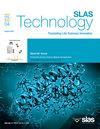将具有高稳定性的全自动流式细胞仪系统集成到筛选站中。
IF 3.7
4区 医学
Q3 BIOCHEMICAL RESEARCH METHODS
引用次数: 0
摘要
近年来,在药物发现研究中对稀有细胞的检测需求日益增加,如非目的分化的细胞或免疫原性评估所需的细胞。由于检测和定量限制取决于实验的稳健性,因此人与人之间的技术差异会对检测系统的性能产生重大影响。在此,我们将流式细胞术集成到细胞实验平台--Screening Station--中,构建了一个稳健的检测系统,使用 Jurkat 细胞检测了流式细胞术预处理的每个步骤,最后评估了整体检测性能。手动实验的细胞检出率为 48.8% ± 5.7%(CV=11.6%),而自动方法的细胞检出率为 73.7%±2.0%(CV=2.8%)。为进一步明确自动方法的分析性能,在 1-100 个表达 PD-1 的 Jurkat 细胞中添加 1 × 105 个 Jurkat 细胞,并评估其检测下限、线性度和 CV%。平均检测率为 69%,判定计数为 0.985,检测下限为 4 个细胞(0.004%)。我们评估了每个加标细胞检测到的细胞数的 CV% 值,发现我们的系统非常稳健,近似于二项分布,回收率为 69%。总之,我们将 Novocyte 流式细胞仪系统集成到自动化实验平台 Screening Station 中,创建了一个具有高度鲁棒性的全自动流式细胞仪检测系统。我们的平台可以满足近年来药物研发对稀有细胞检测的技术需求。本文章由计算机程序翻译,如有差异,请以英文原文为准。
Integration of a fully automated flow cytometry system with high robustness into a Screening Station
In recent years, there has been an increasing demand for the detection of rare cells in drug discovery research, such as cells that have differentiated off-purpose or are required for immunogenicity evaluation. Since detection and quantification limits depend on the robustness of the experiment, inter-human differences in technique have a significant impact on the performance of the assay system. Here, we integrated flow cytometry into a cell experiment platform, Screening Station, to construct a robust assay system, examined each step of the flow cytometric pretreatment using Jurkat cells, and finally evaluated the overall assay performance. Cell detection rate when the experiment was performed manually was 48.8 % ± 5.7 % (CV=11.6 %) versus 73.7 %±2.0 % (CV=2.8 %) with the automated method. To further clarify the analytical performance of the automated method, 1–100 PD-1 expressing Jurkat cells were spiked with 1 × 105 Jurkat cells, and the lower limit of detection, linearity, and CV% were evaluated. Average detection rate was 69 %, decision count was 0.985, and lower limit of detection was 4 cells (0.004 %). We evaluated the CV% value of the number of detected cells per spiked cell and found our system to be highly robust, approximating a binomial distribution with a 69 % recovery rate. In conclusion, we have integrated the Novocyte flow cytometry system into an automated experimental platform, Screening Station, to create a fully automated flow cytometric assay system with high robustness. Our platform can fulfill the technology needs of drug discovery for rare cell detection, which have intensified in recent years.
求助全文
通过发布文献求助,成功后即可免费获取论文全文。
去求助
来源期刊

SLAS Technology
Computer Science-Computer Science Applications
CiteScore
6.30
自引率
7.40%
发文量
47
审稿时长
106 days
期刊介绍:
SLAS Technology emphasizes scientific and technical advances that enable and improve life sciences research and development; drug-delivery; diagnostics; biomedical and molecular imaging; and personalized and precision medicine. This includes high-throughput and other laboratory automation technologies; micro/nanotechnologies; analytical, separation and quantitative techniques; synthetic chemistry and biology; informatics (data analysis, statistics, bio, genomic and chemoinformatics); and more.
 求助内容:
求助内容: 应助结果提醒方式:
应助结果提醒方式:


